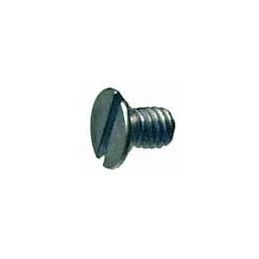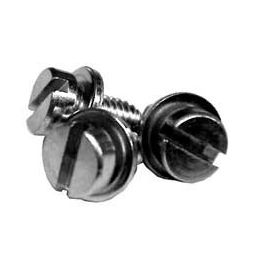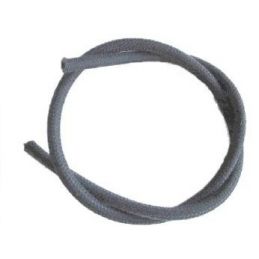Building a Daily Driver - Part 2
The size of the motor is the bore and stroke. So what is a good size to have? Let’s talk about the two.
Bore- There is stock for a 1600. 85.5mm. Great bore size.
87 slip in. Not my favorite. The ID of the bore is 87mm, yet the OD is the same size as the 85.5 so as you can see the thickness of the cylinder wall is thinner. Here in Redding where it’s hot as hell in the summer, what you gain in hp is not worth what we lose in reliability. What does thinner cylinder walls have to do with reliability? We can all agree that the thinner a piece of metal is, the easier it is to warp. If your cylinder warps then you have a round piston in an eye shaped hole. Combustion is somewhat like a cutting torch. You are not going to cut the metal with the torch until you hit the trigger. The trigger is what? Its oxygen. Same thing happens in your cylinder. It's fine until the cylinder warps and the rings collapse on one side of the piston and don’t seat on the other. If the combustion sees oxygen from the crankcase, it will start cutting or burning the piston where the gap or air is coming from. Now I am not saying this is going to happen if you are running 87 slip in. What I am trying to say is for me in this heat we have here in Redding it is not worth the risk.
88mm big bore. These are good but I have to say if you're going to bore your case and heads then why not just run the bigger 90.5mm pistons. I have run the 88mm and had good luck with them. My deal is they cost the same as the 90.5 and the machine work costs are the same.
90.5mm big bore. This is my go to big bore. They have the same OD on the cylinder as the 92mm big bore. So a nice thickness to the cylinder wall. When boring the heads we do not cut into the head stud holes as you would on a 94mm cylinder.
92mm big bore. Truthfully I haven’t run these since the 90.5 came out in the 80’s. The reason is the same as the 87mm slip in. I will give up a few cc’s for a thicker cylinder wall. Now with that said they do make a thick wall 92mm big bore. This cylinder has the same OD as the 94mm cylinder. So plenty thick. I have run them and had good success. I would never start out running them. I only run them if my heads are already cut for the 94mm.
94mm big bore. I am going to take a lot of flack for what I am going to say. I like 94mm big bore for a Friday,/Saturday night car or a drag car. I am not a fan of them on a daily driver. Here is my reasoning. When you cut a head for 94mm cylinders you cut into the head stud holes. Now if you think about it or look you will see a crescent moon shape around the hole where the cylinder sits. So now your sealing surface is less between the head and the cylinder. If the head comes loose enough to expose that air, guess what? Cutting torch again. I have seen it a few times. Guys spend some good money on heads just to torch one.
Stroke - There is 69mm which is the stock stroke. Nothing wrong here at all. If you are going with 85.5 cylinders then the stock stroke is fine. Adding counterweights is a good thing, but not necessary. The nice thing about this stroke is you typically don’t need machine work to the case. If you are thinking 90.5 cylinders then that makes a 1776cc motor. This combo is good for all cars but not in a bus in my opinion. The short stroke and big piston make for a motor that winds up fast but doesn’t have a lot of torque for a bus. The other thing for me is it only cost a grand less than a 2007cc motor and bang for the buck, I rather have the 2007cc motor.
74 or 76 stroke cranks are not bad, but cost the same as a 78. The machine work is going to cost the same so not a big fan of them. Again nothing wrong with them just bang for the buck not sure I am going to use those strokes unless I have one and just trying to save money.
82 plus size stroke. These are not a bad way to go but you should use a longer rod with strokes that big or bigger. What is wrong with that other than price? The motor gets wider. Which means lots of things you wouldn’t think about like custom barrel shims, push rods, tin doesn’t fit, etc. Doesn’t your motor get wider with a 78mm crank? No. Here is my secret. I use the 90.5 piston and cylinder kit made for an 82 stroke crank. What they do here is move the wrist pin up. It gives me the deck height I need with the compression I want with little or no barrel shim. So the motor stays the same width.
One last note, I am not a cast crank fan at all. The factory stock cranks are forged. So if you are spending your money I would get a forged crank. Also, out of the box you should send it to a crank grinder and just have it miked out. This will tell you if the crank journals are on the high side, the low side, whether they are hourglass shaped or even tapered. Just because it’s new doesn’t mean it perfect. It’s worth the money to have it checked and ask for a sheet that has all the numbers. I have never seen a perfect crank with all the four points perfect. My concern here is we are in the middle or on the high side of the wear limit. Example: (std) 2.1640 is the low side and anything under will have to be turned. 2.1650 is the high side. So numbers like 2.1645 is the middle.
Keep in mind you can have the best combo size in the world but the rest of the parts have to work with this. Think about it this way. All the engine parts have to work together as a team to get what we want. If one is out of sync then it throws off the whole deal.







